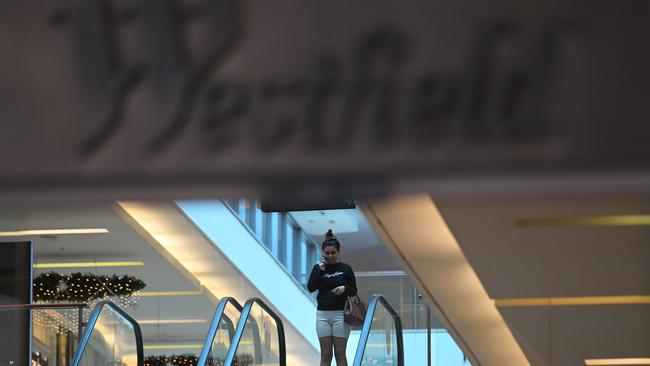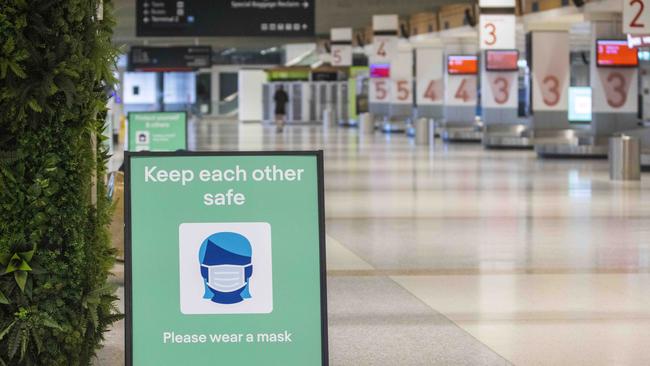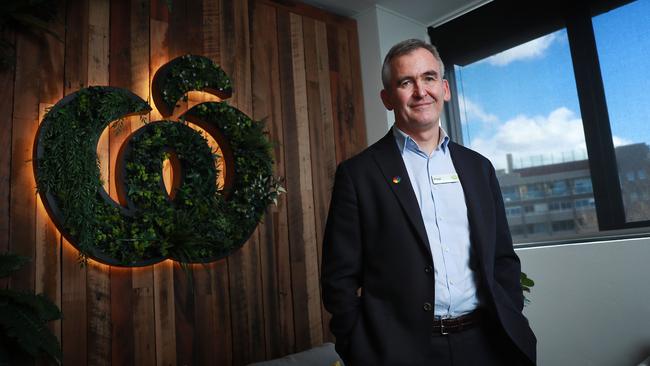
Walking towards the bookstore at the end of the mall, I found myself alone except for a group of three young men walking around aimlessly on the other side, prompting me to suddenly turn on my personal safety radar.
Many shops seemed to be closed. It seemed as if an almost deserted shopping mall, where you suddenly wondered about the implications of finding yourself almost alone, was symbolic of what was to come.
Would the Australian economy shut down, with abandoned malls becoming a memory of a bygone age, while people sheltered at home behind closed doors? Would the odd time traveller or Raider of the Lost Ark walk through their dusty corridors wondering what sort of people had once passed through there?
Inside the bookstore the only other shopper was former NSW premier Nick Greiner, who waited patiently and socially distanced to buy his own copy of Turnbull’s book, until I had sorted out my purchase.
A few weeks earlier in the US, my sister and her husband, visiting their son and his new baby in Nashville, had been laughing at us in Australia hoarding toilet paper.
Then COVID-19 hit the US and they raced to get home as flights to Australia started shutting down.
Almost a year into the COVID-19 pandemic, the Australian economy has emerged much more resilient and more robust than could have been expected for much of 2020, particularly the dark shutdown months of April and May last year.
Wednesday’s slew of financial results showed that COVID-19 has had its share of winners and losers, with those companies that have survived having done so after some hard-nosed efficiencies and high levels of adaptability.
Shopping centre owners (Westfield shopping mall owner Scentre) and airport owners (Sydney Airport) have had a tough time, while supermarket giant Woolworths has ridden the COVID-19 food and home essentials shopping boom.

Scentre Group — whose malls, chief executive Peter Allen pointed out, remained open despite on-again, off-again government-mandated lockdowns — reported a 40 per cent fall in operating profit to $763.4m for the year to the end of December. The company reported a loss of $3.7bn for the year, having decided to make property writedowns of $4.2bn.
Customer visits to its malls around Australia, which were running at 45 million in January last year and 51 million in February, fell to a low of 16 million in April, picking up to 26 million in May.
The last three months of 2020 saw a further recovery with average visits of 46 million a month, rising to 56 million in December.
After a “challenging year”, chief executive Allen is looking forward to a much better 2021.
Sydney Airport, Australia’s busiest, reported a full-year loss of $145m, after a profit of $403m in 2019. Revenue was down 51 per cent at $803m as traffic slumped by almost 75 per cent to 11.2 million passengers.
Its figures showed the advantage of its diverse sources of revenue, with revenue from property and car rental down by only 37 per cent at $158m, compared with the 70 per cent fall in aeronautical revenue to $228m and a 63 per cent fall in retail revenue to $137m.
Its chief executive, Geoff Culbert, is hoping for a better year, declaring the group “cautiously optimistic” about 2021, pointing to the rollout of the vaccine and the knowledge that Australians are more than ready to jump on planes and travel once borders open up.
At the other end of the spectrum is Woolworths, which has gone gangbusters in 2020 as people were forced to stay at home and focus on buying food and household necessities including toilet paper.
Total revenue for the six months to January 3, 2021, was up 10.6 per cent at $35.8bn, with net profit up 16 per cent at $1.135bn (and up by a much stronger 28 per cent on continuing operations).
After scrambling to make sure their premises were COVID-19 safe, with new plastic barriers at check-outs and other changes, Woolworths was in a prime position to benefit from COVID-19 last year.
But while business remains solid into 2021, chief executive Brad Banducci has warned that sales in the June quarter will probably be less than in the COVID-19-boosted June quarter last year.
Banducci reported an 8 per cent rise in sales for the first seven weeks of this year — but as he pointed out, this circles a period when some sales were down due to the bushfires.
“Group sales for the first seven weeks [of 2021] have remained strong, benefiting from continued at-home consumption, Australians not travelling abroad, and a weaker prior year where sales were impacted by bushfires on the east coast,” he said.

Interestingly, the year saw struggling department store Big W turn around, with sales growth of more than 20 per cent and a 166 per cent increase in earnings before interest and tax to $133m — that group’s first profit since 2015.
The stay-at-home consumer phenomenon also appears to have helped that business.
COVID-19 accelerated the shift to e-commerce by Woolworths customers, with the company reporting that e-commerce sales lifted 78 per cent to $2.9bn, making up almost 8 per cent of total sales.
But while he was upbeat, Banducci described the factors behind the outlook for the economy as “messy”, with a mixture of positives and negatives and uncertainties ahead.
The company is closely watching the digital engagement of its customers, with digital visits and engagements exceeding physical visits in the case of Big W and increasing in the case of the supermarkets.
Across the board, the company is seeing a big increase in consumers engaging digitally with the company’s outlets before they walk into its shops.
While COVID-19 has accelerated the trend to digital among consumers, Banducci is critically aware — like Culbert — that people will start travelling as soon as they can, including the more expensive international travel.
Getting back to normal, he said, would also mean more tough competition on prices and focus on “value” (as in Coles’s “Down Down” campaign).
The retail and broader business community is also bracing itself for the end of JobKeeper at the end of March.
Meanwhile, Banducci is looking forward to people being able to celebrate a more normal Easter and Anzac Day this year than they were in deepest lockdown last year.
The fears of lockdown-driven ghost malls did not eventuate and Australia has emerged much stronger than expected, but the winners and losers of 2020 may be a lot different in 2021.








There was a time in May last year, when I walked through a deserted Westfield shopping centre in Sydney in the middle of the day to buy a copy of Malcolm Turnbull’s new book, that the mall looked like a scene from a movie about the end of the world.